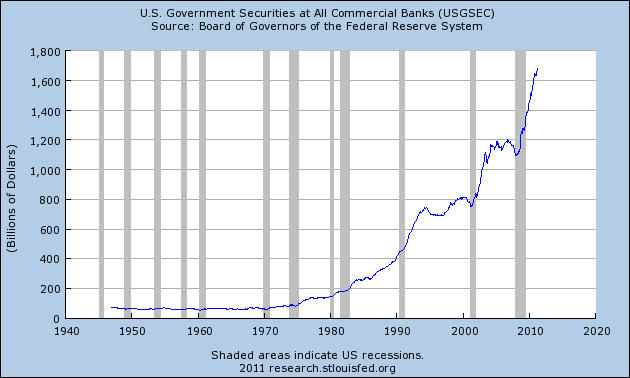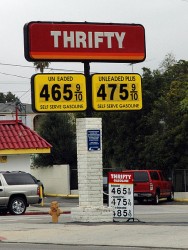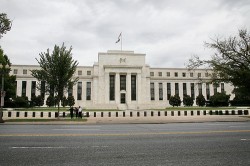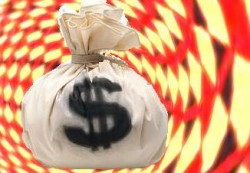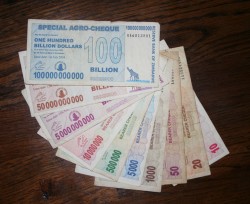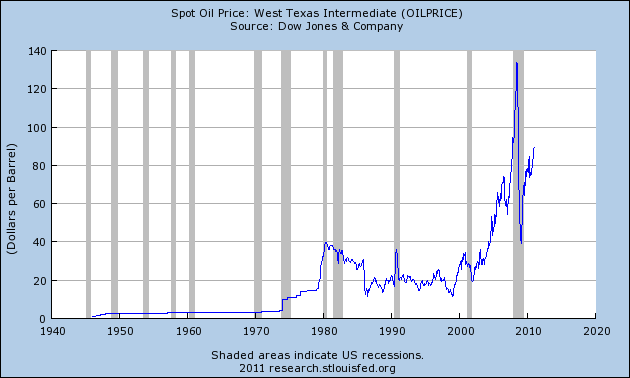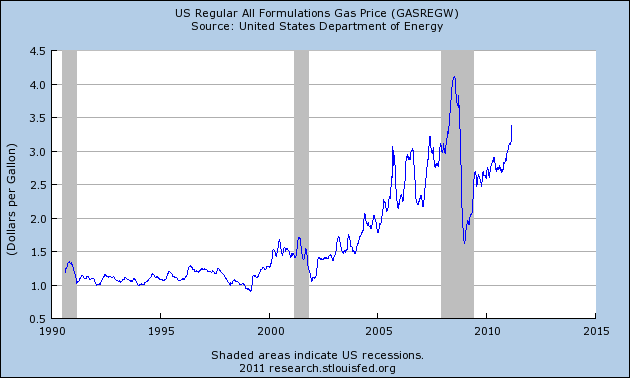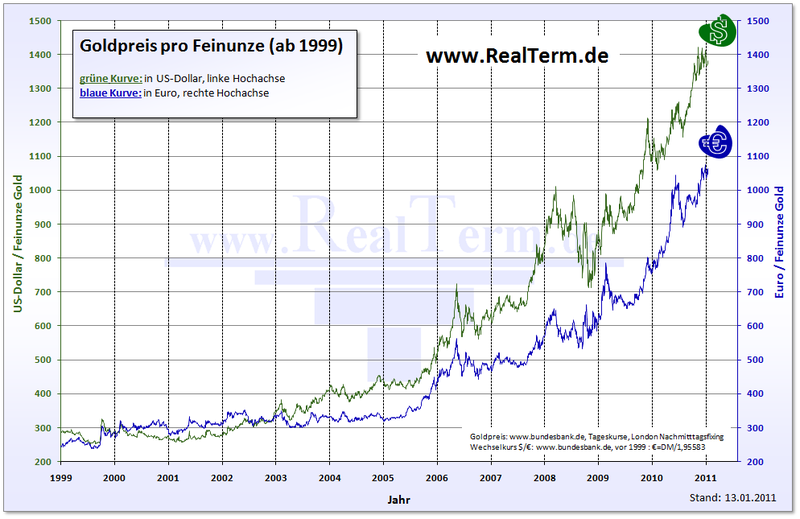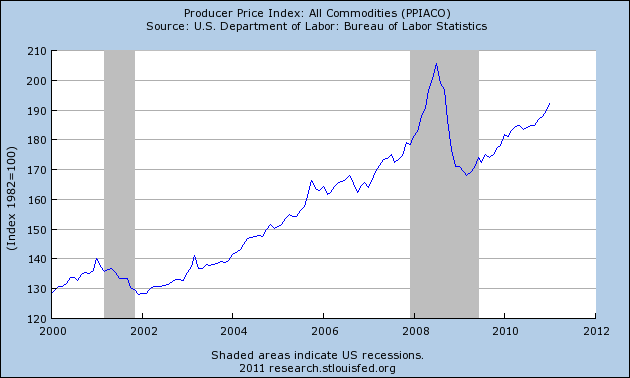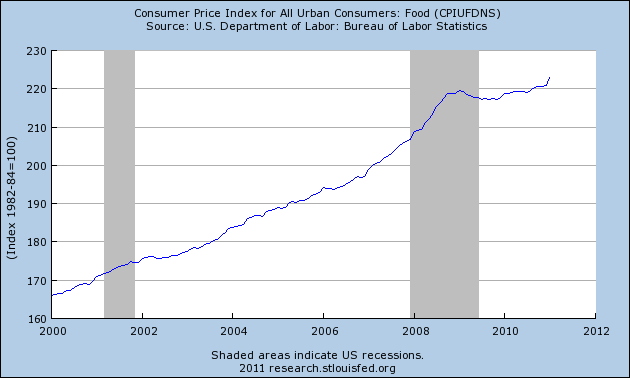 Most Americans do not understand what the Federal Reserve is or why it is at the heart of our economic problems. When Americans get into discussions about the economy, most of them still blame either the Democrats or the Republicans for inflation, for the housing crash, for our rampant unemployment and for the national debt. But the truth is that the institution with the most power over our economic system is the Federal Reserve. So exactly what is the Federal Reserve? Most people would say that it is an agency of the federal government. But that is absolutely not true. In fact, the Federal Reserve itself has argued in court that it is not an agency of the federal government. Rather, the Federal Reserve is a privately-owned banking cartel that has been given a perpetual monopoly over our monetary system by the U.S. Congress. This privately-owned central bank has been destroying the value of the U.S. dollar for decades, it has run our economy into the ground and it has driven the U.S. government to the brink of bankruptcy. The Federal Reserve operates in great secrecy, it has never been subjected to a comprehensive audit and it is not accountable to the American people. Yet the decisions that the Federal Reserve makes have a dramatic impact on the lives of every single American citizen.
Most Americans do not understand what the Federal Reserve is or why it is at the heart of our economic problems. When Americans get into discussions about the economy, most of them still blame either the Democrats or the Republicans for inflation, for the housing crash, for our rampant unemployment and for the national debt. But the truth is that the institution with the most power over our economic system is the Federal Reserve. So exactly what is the Federal Reserve? Most people would say that it is an agency of the federal government. But that is absolutely not true. In fact, the Federal Reserve itself has argued in court that it is not an agency of the federal government. Rather, the Federal Reserve is a privately-owned banking cartel that has been given a perpetual monopoly over our monetary system by the U.S. Congress. This privately-owned central bank has been destroying the value of the U.S. dollar for decades, it has run our economy into the ground and it has driven the U.S. government to the brink of bankruptcy. The Federal Reserve operates in great secrecy, it has never been subjected to a comprehensive audit and it is not accountable to the American people. Yet the decisions that the Federal Reserve makes have a dramatic impact on the lives of every single American citizen.
If you really want to understand what is causing our economic problems, it is absolutely crucial that you understand exactly what the Federal Reserve system is and how it is systematically destroying our economy. Once you understand the truth about the Federal Reserve, you will view economic issues a whole lot differently.
The following are 19 reasons why the Federal Reserve is at the very heart of our economic problems….
#1 The Federal Reserve system is a debt-based financial system.
The way our system is designed, normally no money comes into existence without more debt being created.
But this creates a huge problem, because when a new dollar is created, the interest owed to the banking system on that dollar is not also created at the same time.
Therefore, the amount money that is created is not equal to the larger amount of debt that is also created.
This is a Ponzi scheme that is designed to drain wealth from the American people and transfer it to the banking system.
Today, the amount of debt in our economic system is far, far, far greater than the total amount of money.
The only way to keep the game going is to create even more money which creates even more debt.
#2 The Federal Reserve and the bankers have a monopoly on the creation of this debt-based money.
In the United States today, the only people that can create money are the bankers.
You cannot create money.
You would go to jail if you tried.
Even the U.S. government cannot create money.
Although the U.S. Constitution specifically gives Congress the power to create money, the U.S. Congress has given that power to the Federal Reserve and to the banking system.
This gives them an enormous amount of power.
So how does money creation actually work?
Most Americans don’t understand this.
As I have written about previously, the way our system is designed is that all money is supposed to originally come into existence as government debt….
When the government wants more money, the U.S. government swaps U.S. Treasury bonds for “Federal Reserve notes”, thus creating more government debt. Usually the money isn’t even printed up – most of the time it is just electronically credited to the government. The Federal Reserve creates these “Federal Reserve notes” out of thin air. These Federal Reserve notes are backed by nothing and have no intrinsic value of their own.
The Federal Reserve then sells these U.S. Treasury bonds to investors, other nations (such as China) or sometimes they “sell” them back to themselves. In fact, the Federal Reserve has been gobbling up a whole lot of U.S. Treasuries lately. Some refer to this as “monetizing the debt”, but that is not quite an accurate statement.
When the Federal Reserve creates money this way, it does not also create the money to pay the interest on the debt that has been created. Eventually this puts pressure on the U.S. government to borrow even more money to keep the game going. So what this creates is a spiral where the U.S. government must keep borrowing increasingly larger amounts of money, where the money supply is endlessly expanding and where the value of the U.S. dollar is destined to continue going down forever.
Once “Federal Reserve Notes” are in circulation, there is another way that money is created.
It is called “fractional reserve lending”.
Once you or I deposit money into a bank, the bank is only required to keep a very small amount of it actually in the bank. The rest of it the bank can loan out to others (at interest of course). This process can be repeated over and over and over, creating more money and an even larger amount of debt.
But the important part to take away from all this is that normally money is only created when debt is created, and the amount of debt to be paid back is always larger than the amount of money created.
This entire system is designed to drain our wealth and to put it into the hands of the bankers.
#3 The power of money creation and debt creation is in the hands of private individuals – not the government.
The Federal Reserve claims that it is an “entity within the government, having both public purposes and private aspects.”
That sounds so reasonable, but the truth is that the Federal Reserve is a legalized banking cartel that is privately-owned.
In fact, the Federal Reserve is about as “federal” as Federal Express is.
In defending itself against a Bloomberg request for information under the Freedom of Information Act, the Federal Reserve objected by declaring that it was “not an agency” of the U.S. government and therefore it was not subject to the Freedom of Information Act. It is kind of funny how Fed officials are always talking about how important their “independence” is, but whenever anyone starts criticizing them for being private they start stressing their ties with the government.
So who owns the Federal Reserve?
As the Federal Reserve’s own website describes, it is the member banks that own it….
The twelve regional Federal Reserve Banks, which were established by Congress as the operating arms of the nation’s central banking system, are organized much like private corporations–possibly leading to some confusion about “ownership.” For example, the Reserve Banks issue shares of stock to member banks. However, owning Reserve Bank stock is quite different from owning stock in a private company. The Reserve Banks are not operated for profit, and ownership of a certain amount of stock is, by law, a condition of membership in the System. The stock may not be sold, traded, or pledged as security for a loan; dividends are, by law, 6 percent per year.
In particular, as we will see below, the banks of the New York Federal Reserve have the most influence over the system.
So who owns the member banks?
Well, when you trace the ownership of the member banks to the very top you find that the international banking elite are very strongly represented.
#4 The Federal Reserve itself is not much of a profit-making institution. Rather, it is a tool that enables others to make obscene amounts of money.
There are many that think of the Federal Reserve as an evil profit-making machine. But the truth is that the Fed doesn’t make that much money. Rather, the system was set up so that others could make an obscene amount of money from U.S. government debt.
Many of those opposed to the Federal Reserve point to the record $80.9 billion in profits that the Federal Reserve made last year as evidence that they are robbing the American people blind. But then those defending the Federal Reserve will point out that the Fed returned $78.4 billion to the U.S. Treasury.
In the end, those numbers are not nearly as important as the hundreds of billions of dollars in interest that are made off of U.S. government debt each year.
If the U.S. government had been issuing debt-free money all this time, the U.S. government would likely not be spending one penny on interest payments. Instead, the U.S. government spent over 413 billion dollars on interest on the national debt during fiscal 2010. This is money that belonged to U.S. taxpayers that was transferred to the U.S. government which in turn was transferred to wealthy international bankers and other foreign governments.
This is where the magic of the Federal Reserve system is. It is in getting the U.S. government enslaved to debt and using that debt to transfer hundreds of billions of dollars of our wealth into the hands of others.
As interest rates go up, this phenomenon is going to become even more brutal. Right now it is being projected that the U.S. government will be paying 900 billion dollars just in interest on the national debt by the year 2019.
As you fill out your tax return this year, just keep in mind that vast quantities of our money is going to pay interest on debt that the U.S. government never needed to become enslaved to.
There are some very happy people out there that are becoming fabulously wealthy at our expense.
What a system, eh?
#5 The Federal Reserve is a perpetual debt machine.
As mentioned above, the U.S. government is enslaved to debt.
So how did it get enslaved?
Well, instead of printing up and spending the money that it needs, the U.S. government borrows it through the Federal Reserve system at interest.
In fact, as noted above, the U.S. government cannot create a single new dollar without borrowing it.
But each new dollar that the U.S. government borrows creates more than a dollar of new debt.
As a result, the government eventually has to collect more in taxes than what it has borrowed.
This phenomenon creates an endless debt spiral.
And is that not what we have in the United States today? In fact, you see this in almost every nation on earth where a similar central banking system has been established.
Did you know that the U.S. national debt is more than 5,000 times larger than it was 100 years ago?
That’s right – back in 1910, prior to the passage of the Federal Reserve Act, the national debt was only about $2.6 billion.
The only way that the U.S. government can inject more money into the economy is by going into more debt. But when new government debt is created, the amount of money to pay the interest on that debt is not also created. In this way, it was intended by the international bankers that U.S. government debt would expand indefinitely and the U.S. money supply would also expand indefinitely. In the process, the international bankers would become insanely wealthy by lending money to the U.S. government.
However, things did not have to turn out this way.
If the Federal Reserve had never been created, and the U.S. government had been issuing debt-free currency all this time, it is entirely conceivable that we would have absolutely no federal government debt at this point.
Unfortunately, we are now trapped in a debt-based system.
The U.S. national debt simply cannot ever be paid off. U.S. government debt has been mathematically designed to expand forever. It is a trap from which there is no escape.
Sadly, we have now gotten to a terminal phase of the debt spiral. The Congressional Budget Office is projecting that U.S. government debt held by the public will reach a staggering 716 percent of GDP by the year 2080. Remember when I used the term “debt spiral” earlier? This is what a debt spiral looks like….

#6 The Federal Reserve system is designed to cause inflation.
As U.S. government debt expands at an exponential pace, it inevitably causes inflation.
Most Americans believe that inflation is a fact of life, but the truth is that the United States has only had a major, ongoing problem with inflation since the Federal Reserve was created back in 1913.
Sadly, the U.S. dollar has lost well over 95 percent of its value since the Federal Reserve was created.
If the Federal Reserve did not exist, it is theoretically conceivable that we could have an economy with little to no inflation. Of course that would greatly depend on the discipline of our government officials (which is not very great at this point), but the sad truth is that our current system is always going to produce inflation. In fact, the Federal Reserve system was originally designed to be inflationary. Just check out the inflation chart posted below. The U.S. never had massive problems with inflation before the Fed was created, but now it is just wildly out of control….

#7 The Federal Reserve has decided to play bizarre games with our money supply.
In a desperate attempt to revive the dying U.S. economy, the Federal Reserve has resorted to chucking gigantic quantities of cash into the financial system.
Remember how earlier I explained that normally whenever new money is created that more debt is created?
Well, lately the Fed has been resorting to a trick called “quantitative easing”. What “quantitative easing” means is that the Federal Reserve zaps massive amounts of money into existence out of thin air and starts spending it on anything that it wants to buy. Lately, this has primarily been done to buy up U.S. government debt.
But isn’t that “monetizing the debt”?
Of course it is, and it is a blatant Ponzi scheme.
However, what is even more alarming is what this is doing to our money supply.
Just look at what has happened to our monetary base since about mid-2008….
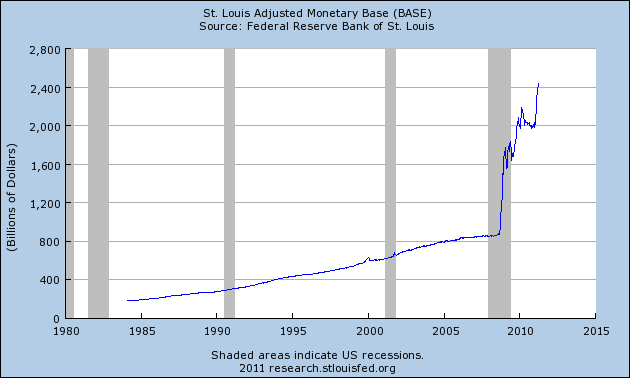
Does anyone in their right mind believe that this is not going to cause horrible inflation?
Right now most of the new cash is tied up in the financial system, but once it gets out into the regular economy watch out!
#8 The Federal Reserve is undemocratic.
In a previous article, I asked the following question:
“So what makes the central economic planning that the Federal Reserve does different from the central economic planning that communist China does?”
In both cases, a bunch of unelected elitists run the economy and make important economic decisions for the rest of us.
So what really is the difference?
#9 The Federal Reserve runs the U.S. economy.
Most Americans want to blame Obama or Bush or the U.S. Congress for the state of the economy.
But the truth is that it is the Federal Reserve that sets interest rates, it is the Federal Reserve that determines the money supply, it is the Federal Reserve that sets the “target rate” of inflation, it is the Federal Reserve that determines if unemployment is too high or too low and it is the Federal Reserve that watches over all of our banks.
Yes, Obama, Bush and the U.S. Congress all have things to answer for as well.
But none of them have the direct power over the economy that the Federal Reserve does.
#10 The Federal Reserve favors the big banks.
Not all financial institutions are treated equally by the Fed.
The truth is that the big banks (particularly those on Wall Street) are treated with great favor by the Federal Reserve.
If the Federal Reserve did not exist, the big Wall Street banks would not have such an overwhelming advantage. Most Americans simply have no idea that over the last several years the Federal Reserve has been giving gigantic piles of nearly interest-free money to the big Wall Street banks which they turned right around and started lending to the federal government at a much higher rate of return. I don’t know about you, but if I was allowed to do that I could make a whole bunch of money very quickly. In fact, it has come out that the Federal Reserve made over $9 trillion in overnight loans to major banks, large financial institutions and other “friends” during the financial crisis of 2008 and 2009.
Wouldn’t you like to be able to zap trillions of dollars into existence and loan it out to your friends at very favorable terms?
Sadly, most of the “help” from the Federal Reserve always seems to go to the big boys.
When “small enough to fail” banks need assistance, they are usually told to go sell themselves to one of the big banks.
#11 The worse the debt problems caused by the Federal Reserve become, the more money the IRS needs to collect from the rest of us.
If the U.S. government could issue debt-free money, it is conceivable that we would not even need the IRS. You doubt this? Well, the truth is that the United States did just fine for well over a hundred years without a national income tax. But about the same time the Federal Reserve was created a national income tax was instituted as well. The whole idea was that the wealth of the American people would be transferred to the U.S. government by force and then transferred into the hands of the ultra-wealthy in the form of interest payments.
If the Federal Reserve was shut down, it is entirely possible that we would be able to shut down the IRS as well.
But the only way that the current system works is if massive amounts of wealth continue to be drained from the American people.
#12 The Federal Reserve creates artificial financial bubbles.
When you look back over the last several decades, you will find financial bubble after financial bubble.
So who created all of those bubbles?
It was the Federal Reserve.
The ridiculous policies of Greenspan and Bernanke have wrought disaster after disaster and yet most of our politicians still will not even consider major changes to the Federal Reserve.
#13 The Federal Reserve is anti-free market.
In a true free market system, the marketplace would determine what interest rates are.
In a true free market system, the marketplace would determine which financial institutions survive.
In a true free market system, artificial financial bubbles would be far less likely.
But we don’t have a true free market system.
#14 The Federal Reserve tells the rest of the our banks what to do.
Most Americans don’t understand just how much power the Federal Reserve actually has over our local banks.
For example, just last year Federal Reserve officials walked into one bank in Oklahoma and demanded that they take down all the Bible verses and all the Christmas buttons that the bank had been displaying.
#15 The people currently running the Federal Reserve pretty much have no idea what they are doing.
In case anyone has not noticed, Federal Reserve Chairman Ben Bernanke has a very long track record of incompetence. Nearly every major judgment that he has made since taking over that position has been dead wrong.
If one of us could go down the street and appoint the manager of the local Dairy Queen as the Chairman of the Federal Reserve, it is very doubtful that person would do a worse job than Bernanke has done.
#16 Even though the Federal Reserve has such extraordinary power over the financial system, the American people are not permitted to examine their books.
The Federal Reserve claims that they are regularly audited, but when some members of Congress attempted to push through a true comprehensive audit of the Fed last year Federal Reserve officials threw a hissy fit.
The truth is that the Federal Reserve has never undergone a true comprehensive audit since it was created back in 1913.
Whenever the subject of an audit comes up, Bernanke and others at the Fed keep repeating the mantra of how important “the independence of the Federal Reserve” is.
Sadly, Ron Paul’s proposal to audit the Federal Reserve last year, which had previously been co-sponsored by 320 members of the U.S. House of Representatives, ultimately failed by a vote of 229-198.
Instead, a very, very limited examination of Fed transactions that occurred during the recent financial crisis was approved.
So what did that limited examination reveal?
Well, the Federal Reserve was forced to reveal the details of 21,000 transactions stretching from December 2007 to July 2010 that combined were worth trillions of dollars. It turns out that the Federal Reserve was just handing out gigantic piles of nearly interest-free cash to their friends at the largest banks, financial institutions and corporations all over the globe.
Many members of Congress were absolutely stunned by these revelations.
So what would a more comprehensive audit reveal?
#17 The Federal Reserve has way too much power.
If the Federal Reserve did not exist, we would not have an unelected, unaccountable “fourth branch of government” running around that has gotten completely and totally out of control. Even some members of Congress are now openly complaining about how much power the Fed has. For example, Ron Paul told MSNBC last year that he believes that the Federal Reserve is now more powerful than Congress…..
“The regulations should be on the Federal Reserve. We should have transparency of the Federal Reserve. They can create trillions of dollars to bail out their friends, and we don’t even have any transparency of this. They’re more powerful than the Congress.”
#18 The Federal Reserve is dominated by Wall Street and the New York banks.
The New York representative is the only permanent member of the Federal Open Market Committee, while other regional banks rotate in 2 and 3 year intervals. The former head of the New York Fed, Timothy Geithner, is now U.S. Treasury Secretary. The truth is that the Federal Reserve Bank of New York has always been the most important of the regional Fed banks by far, and in turn the Federal Reserve Bank of New York has always been dominated by Wall Street and the major New York banks.
The cold, hard reality of the matter is that the Federal Reserve is just another one of the tools that the Wall Street banking elite use to dominate all the rest of us.
#19 The Federal Reserve has brought us to the brink of economic collapse.
If the Federal Reserve had never been created, the American people would not be so enslaved to debt. At the very core of our economic problems is debt. American consumers are swamped with debt, state and local governments are facing horrific debt problems from coast to coast and the federal government has piled up the biggest mountain of debt in the history of the world.
We are living in an absolutely massive debt bubble, and when it bursts the world is going to experience financial chaos like it has never seen before.
Things did not have to turn out this way. We did not have to adopt a debt-based financial system. We did not have to allow the bankers to enslave us with debt.
But that is what happened.
Sadly, most Americans and the vast majority of our politicians are still clueless about these issues.
In 1922, Henry Ford wrote the following….
“The people must be helped to think naturally about money. They must be told what it is, and what makes it money, and what are the possible tricks of the present system which put nations and peoples under control of the few.”
Hopefully this article will help people understand our debt-based financial system a little bit better.
Until we fundamentally change our system, many of the economic and financial problems we are currently experiencing will never go away.
Thankfully, it does appear that some Americans are waking up.
According to a recent Bloomberg National Poll, the number of Americans that would like to see the Federal Reserve held more accountable or even completely abolished is increasing….
Asked if the central bank should be more accountable to Congress, left independent or abolished entirely, 39 percent said it should be held more accountable and 16 percent that it should be abolished. Only 37 percent favor the status quo.
Those are very exciting numbers.
Hopefully we can awaken many more Americans to the dangers of a debt-based economy.
In the book of Proverbs, it tells us the following….
The rich ruleth over the poor, and the borrower is servant to the lender.
Well, by allowing ourselves to become enslaved to debt, we have become the servants of the international banking system.
Not only that, we have also sold our children and our grandchildren into perpetual debt slavery.
Thomas Jefferson tried to warn us about this.
He believed that when the government borrows money in one generation which must be paid back by future generations it is equivalent to stealing….
And I sincerely believe, with you, that banking establishments are more dangerous than standing armies; and that the principle of spending money to be paid by posterity, under the name of funding, is but swindling futurity on a large scale.
In fact, Thomas Jefferson said that if he could add one more amendment to the U.S. Constitution it would be a ban on all government borrowing….
I wish it were possible to obtain a single amendment to our Constitution. I would be willing to depend on that alone for the reduction of the administration of our government to the genuine principles of its Constitution; I mean an additional article, taking from the federal government the power of borrowing.
Where would we be today if we had listened to Thomas Jefferson?
The amount of government debt that we have racked up is a great evil. We have stolen the future away from our children and our grandchildren. We have put them in a position where they will spend the rest of their lives paying off our debts to the bankers.
We owe it to future generations to fix the problems that we have created.
That is why so many of us believe that it is time for the U.S. Congress to shut down the Federal Reserve. Our current financial system is a complete and utter failure and we need to start over.
 Every year when July 4th rolls around, Americans from coast to coast celebrate July 4th with cookouts, outdoor concerts and fireworks. We love celebrating Independence Day and yet we are deeply enslaved to debt. We like to think of ourselves as “free” and yet we have rolled up the biggest pile of debt the world has ever seen. The people that we have borrowed all of this money from expect to be paid. Sadly, instead of addressing the problem, we have been loading more debt on to the backs of future generations with each passing year. What we are doing to our kids and our grandkids is so immoral that is almost defies description. At the heart of this debt-based system stands the Federal Reserve. It is a perpetual debt machine that was designed to trap the U.S. government in a spiral of debt permanently. Today, the U.S. national debt is 4700 times larger than it was when the Federal Reserve was created back in 1913. This year alone, we will add more to the national debt than we did from the presidency of George Washington to the beginning of the presidency of Ronald Reagan. So yes, enjoy the hotdogs and the fireworks, but also remember that we will never be free as long as this constantly expanding debt problem is hanging over our heads.
Every year when July 4th rolls around, Americans from coast to coast celebrate July 4th with cookouts, outdoor concerts and fireworks. We love celebrating Independence Day and yet we are deeply enslaved to debt. We like to think of ourselves as “free” and yet we have rolled up the biggest pile of debt the world has ever seen. The people that we have borrowed all of this money from expect to be paid. Sadly, instead of addressing the problem, we have been loading more debt on to the backs of future generations with each passing year. What we are doing to our kids and our grandkids is so immoral that is almost defies description. At the heart of this debt-based system stands the Federal Reserve. It is a perpetual debt machine that was designed to trap the U.S. government in a spiral of debt permanently. Today, the U.S. national debt is 4700 times larger than it was when the Federal Reserve was created back in 1913. This year alone, we will add more to the national debt than we did from the presidency of George Washington to the beginning of the presidency of Ronald Reagan. So yes, enjoy the hotdogs and the fireworks, but also remember that we will never be free as long as this constantly expanding debt problem is hanging over our heads.
